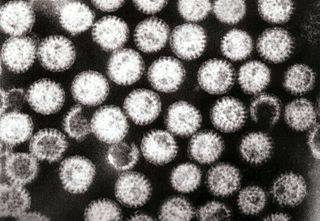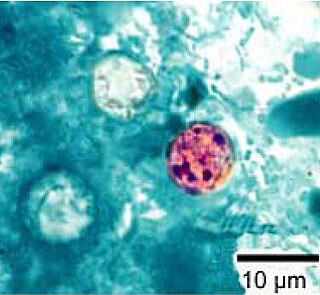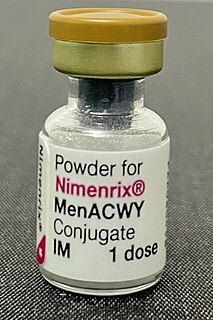This article needs additional citations for verification .(February 2016) |

Travel medicine or emporiatrics is the branch of medicine that deals with the prevention and management of health problems of international travelers.
This article needs additional citations for verification .(February 2016) |

Travel medicine or emporiatrics is the branch of medicine that deals with the prevention and management of health problems of international travelers.
Globalization facilitates the spread of disease and increases the number of travelers who will be exposed to a different health environment. Major content areas of travel medicine include the global epidemiology of health risks to the traveler, vaccinology, malaria prevention, and pre-travel counseling designed to maintain the health of the approximately 600 million international travelers. It has been estimated that about 80 million travelers go annually from developed to developing countries. [1]
Mortality studies indicate that cardiovascular disease accounts for most deaths during travel (50–70%), while injury and accident follow (~25%). Infectious disease accounts for about 2.8–4% of deaths during/from travel. Morbidity studies suggest that about half of people from a developed country who stay one month in a developing country will get sick. [1] Traveler's diarrhea is the most common problem encountered.
The field of travel medicine encompasses a wide variety of disciplines including epidemiology, infectious disease, public health, tropical medicine, high altitude physiology, travel related obstetrics, psychiatry, occupational medicine, military and migration medicine, and environmental health. [2]
Special itineraries and activities include cruise ship travel, diving, mass gatherings (e.g. the Hajj), and wilderness/remote regions travel.
Travel medicine can primarily be divided into four main topics: prevention (vaccination and travel advice), assistance (dealing with repatriation and medical treatment of travelers), wilderness medicine (e.g. high-altitude medicine, cruise ship medicine, expedition medicine, etc.) and access to health care, provided by travel insurance.
Travel medicine includes pre-travel consultation and evaluation, contingency planning during travel, and post-travel follow-up and care. Information is provided by the WHO that addresses health issues for travelers for each country as well as the specific health risks of air travel itself. [3] Also, the CDC publishes valuable and up-to-date information. Key areas to consider are vaccination and the seven I's:
Yellow fever is endemic to certain areas in Africa and South America. The CDC site delineates the risk areas and provides information about vaccination and preventive steps. [4]
Meningococcal meningitis is endemic in the tropical meningococcal belt of Africa. Vaccination is required for pilgrims going to Mecca. [5] Detailed information is available on the CDC site. [6]
Malaria prevention consists of preventing or reducing exposure to mosquitos by using screened rooms, air-conditioning, and nets, and use of repellents (usually DEET). In addition, chemoprophylaxis is started before travel, during the time of potential exposure, and for four weeks (chloroquine, doxycycline, or mefloquine) or seven days (atovaquone/proguanil or primaquine) after leaving the risk area. [7]
The traveler should have a medication kit to provide for necessary and useful medication. Based on circumstances, it should also include malaria prophylaxis, condoms, and medication to combat traveler's diarrhea. In addition, a basic first aid kit can be of use.
Studies have shown there are four main medical problems that travellers develop—diarrhoea or gut problems, respiratory problems, wounds and pain. The medical kit should at least address these common things.
Research has also shown that the best treatment for travellers diarrhoea is to take an antibiotic (e.g. ciprofloxacin) plus a stopper (e.g. loperamide). [8] Due to bacterial resistance, different parts of the world require different antibiotics. It is best to consult a travel doctor to sort out the best medical kit for the exact destination and medical history of the person travelling.

The Centers for Disease Control and Prevention (CDC) is the national public health agency of the United States. It is a United States federal agency, under the Department of Health and Human Services, and is headquartered in Atlanta, Georgia.

Diarrhea, also spelled diarrhoea, is the condition of having at least three loose, liquid, or watery bowel movements each day. It often lasts for a few days and can result in dehydration due to fluid loss. Signs of dehydration often begin with loss of the normal stretchiness of the skin and irritable behaviour. This can progress to decreased urination, loss of skin color, a fast heart rate, and a decrease in responsiveness as it becomes more severe. Loose but non-watery stools in babies who are exclusively breastfed, however, are normal.

Shigellosis is an infection of the intestines caused by Shigella bacteria. Symptoms generally start one to two days after exposure and include diarrhea, fever, abdominal pain, and feeling the need to pass stools even when the bowels are empty. The diarrhea may be bloody. Symptoms typically last five to seven days and it may take several months before bowel habits return entirely to normal. Complications can include reactive arthritis, sepsis, seizures, and hemolytic uremic syndrome.

Mefloquine, sold under the brand name Lariam among others, is a medication used to prevent or treat malaria. When used for prevention it is typically started before potential exposure and continued for several weeks after potential exposure. It can be used to treat mild or moderate malaria but is not recommended for severe malaria. It is taken by mouth.
Tropical diseases are diseases that are prevalent in or unique to tropical and subtropical regions. The diseases are less prevalent in temperate climates, due in part to the occurrence of a cold season, which controls the insect population by forcing hibernation. However, many were present in northern Europe and northern America in the 17th and 18th centuries before modern understanding of disease causation. The initial impetus for tropical medicine was to protect the health of colonial settlers, notably in India under the British Raj. Insects such as mosquitoes and flies are by far the most common disease carrier, or vector. These insects may carry a parasite, bacterium or virus that is infectious to humans and animals. Most often disease is transmitted by an insect bite, which causes transmission of the infectious agent through subcutaneous blood exchange. Vaccines are not available for most of the diseases listed here, and many do not have cures.

Travelers' diarrhea (TD) is a stomach and intestinal infection. TD is defined as the passage of unformed stool while traveling. It may be accompanied by abdominal cramps, nausea, fever, headache and bloating. Occasionally bloody diarrhea may occur. Most travelers recover within three to four days with little or no treatment. About 10% of people may have symptoms for a week.

Tropical medicine is an interdisciplinary branch of medicine that deals with health issues that occur uniquely, are more widespread, or are more difficult to control in tropical and subtropical regions.
Wilderness-acquired diarrhea is a variety of traveler's diarrhea in which backpackers and other outdoor enthusiasts are affected. Potential sources are contaminated food or water, or "hand-to-mouth", directly from another person who is infected. Cases generally resolve spontaneously, with or without treatment, and the cause is typically unknown. The National Outdoor Leadership School has recorded about one incident per 5,000 person-field days by following strict protocols on hygiene and water treatment. More limited, separate studies have presented highly varied estimated rates of affliction that range from 3 percent to 74 percent of wilderness visitors. One survey found that long-distance Appalachian Trail hikers reported diarrhea as their most common illness. Based on reviews of epidemiologic data and literature, some researchers believe that the risks have been over-stated and are poorly understood by the public.

Cyclospora cayetanensis is a coccidian parasite that causes a diarrheal disease called cyclosporiasis in humans and possibly in other primates. Originally reported as a novel pathogen of probable coccidian nature in the 1980s and described in the early 1990s, it was virtually unknown in developed countries until awareness increased due to several outbreaks linked with fecally contaminated imported produce. C. cayetanensis has since emerged as an endemic cause of diarrheal disease in tropical countries and a cause of traveler's diarrhea and food-borne infections in developed nations. This species was placed in the genus Cyclospora because of the spherical shape of its sporocysts. The specific name refers to the Cayetano Heredia University in Lima, Peru, where early epidemiological and taxonomic work was done.

Meningococcal disease describes infections caused by the bacterium Neisseria meningitidis. It has a high mortality rate if untreated but is vaccine-preventable. While best known as a cause of meningitis, it can also result in sepsis, which is an even more damaging and dangerous condition. Meningitis and meningococcemia are major causes of illness, death, and disability in both developed and under-developed countries.
Malaria prophylaxis is the preventive treatment of malaria. Several malaria vaccines are under development.
Travel clinics are medical facilities that specialize in the practice of travel medicine. The field primarily focuses on providing preventive medical care, such as administering vaccinations against tropical diseases such as yellow fever and typhoid fever as well as prescribing medications to prevent malaria. Travel clinic patients, or clients as they are sometimes known, are largely international travelers embarking on trips abroad for purposes related to leisure, business, adoption and visiting friends and family.
NmVac4-A/C/Y/W-135 is the commercial name of the polysaccharide vaccine against the bacterium that causes meningococcal meningitis. The product, by JN-International Medical Corporation, is designed and formulated to be used in developing countries for protecting populations during meningitis disease epidemics.

Cholera vaccines are vaccines that are effective at preventing cholera. For the first six months after vaccination they provide about 85 percent protection, which decreases to 50 percent or 62 percent during the first year. After two years the level of protection decreases to less than 50 percent. When enough of the population is immunized, it may protect those who have not been immunized.

Meningococcal vaccine refers to any vaccine used to prevent infection by Neisseria meningitidis. Different versions are effective against some or all of the following types of meningococcus: A, B, C, W-135, and Y. The vaccines are between 85 and 100% effective for at least two years. They result in a decrease in meningitis and sepsis among populations where they are widely used. They are given either by injection into a muscle or just under the skin.

Yellow fever vaccine is a vaccine that protects against yellow fever. Yellow fever is a viral infection that occurs in Africa and South America. Most people begin to develop immunity within ten days of vaccination and 99 percent are protected within one month, and this appears to be lifelong. The vaccine can be used to control outbreaks of disease. It is given either by injection into a muscle or just under the skin.

Naval Medical Research Unit Three (NAMRU-3) is a biomedical research laboratory of the US Navy located in Sigonella, Italy. Previously it was located in Cairo, Egypt. NAMRU-3 is the oldest U.S. overseas military medical research facility that has remained in the same location, and one of the largest medical research laboratories in the North Africa-Middle East region. The laboratory has been in continuous operation despite periods of political tension and a seven-year lapse in U.S.-Egyptian relations (1967–1973) since 1942.
Travel health nursing is a nursing specialty which promotes the health and safety of national and international travelers. Similar to travel medicine, it is an interdisciplinary practice which draws from the knowledge bases of vaccines, epidemiology, tropical medicine, public health, and health education. Travel nursing has experienced an increase in global demand due to the evolution of travel medicine. Travel health nursing was recognized during the 1980s as an emerging occupation to meet the needs of the traveling public, and additional education and training was established. Travel health nurses typically work in "private practice, hospital outpatient units, universities, the government, and the military", and have more opportunities and leadership roles as travel has become more common. However, they also experience organizational and support-related conflicts with general practitioners and patients in healthcare settings.
Prof. Robert Steffen is an Emeritus Professor at the Epidemiology, Biostatistics and Prevention Institute, University of Zurich, Switzerland and an adjunct professor at the University of Texas School of Public in Houston, U.S.A, and he is an Editor of the Journal of Travel Medicine.

The Division of Global Migration and Quarantine (DGMQ) is the part of the U.S. government responsible for U.S. Quarantine Stations and issuing quarantine orders. It is part of the National Center for Emerging and Zoonotic Infectious Diseases within the Centers for Disease Control and Prevention (CDC).